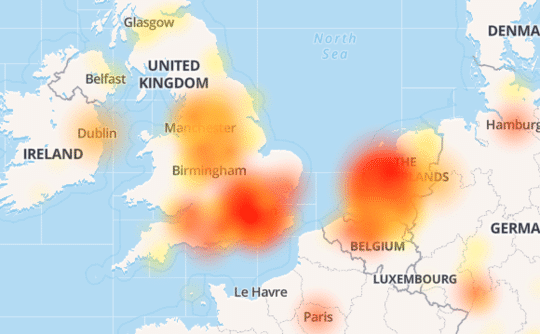Imagine coming into your office, firing up the computer…and not getting any email. For some, this might seem like a dream scenario but only if you didn’t have work to do. In reality, this would likely be a disaster for productivity.
Unfortunately, even with Microsoft’s robust infrastructure for Microsoft 365 email security and Outlook.com, significant service disruptions impacting email can, and do, happen.
Recent years have seen various incidents causing downtime, often with limited visibility on restoration times or impact. While cloud outages affect all major providers, the reliance on email makes any disruption painful.
Here are a few significant Microsoft 365 email security disruptions from recent years:
March 1, 2025 – Exchange Online Outage:
A major global outage left users without access to mailboxes or email for over a week. Linked to a potential vulnerability (CVE-2024-49035), the incident raised concerns over compromised and deleted mailboxes. Microsoft cited an “accidental update” but didn’t fully explain the cause.
December 2023 – Outlook Crashes After Security Update
A security update caused Outlook Desktop to crash when sending from Outlook.com accounts. The disruption lasted several days, highlighting the risks of untested patches and proving that email security processes aren’t always failsafe.
August 8, 2023 – Spoofing Patch Breaks Outlook:
A patch meant to fix a spoofing flaw triggered display issues in Outlook Desktop—blocked images and read-only meeting bodies. It took several days and a follow-up update to restore full functionality. This incident proved email security isn’t foolproof, even when fixing known vulnerabilities.
These events underscore the need for resilience in your email security stack.
99.9% Uptime? Not Always Enough for Modern Email Security
Microsoft’s financially backed Service Level Agreement (SLA) guarantees 99.9% uptime for many services, which still translates to potentially over 43 minutes of downtime per month.
As cybersecurity threats evolve and business reliance on email grows, this might not be sufficient for organizations needing continuous access, especially those requiring HIPAA-compliant email or consistent malware protection.
Effective email security often needs higher availability guarantees than the standard SLA provides.
Email continuity solutions offer:
- Near 100% uptime for email access during primary service outages.
- Often integrated with email archiving solutions for compliance and data access.
- Can complement existing email encryption and secure email workflows.
- Continued email phishing protection even when the primary mail service is down.
Key Considerations for Microsoft 365 Email Security Continuity
- Automated Failover: Ensure secondary email security layers, like email phishing protection and integrations with tools like Proofpoint Essentials, stay active during outages.
- Web Access: Employees need secure webmail access (similar to secure email Outlook access via browser) if desktop clients fail.
- Sync Recovery: Post-outage, email authentication processes and DMARC checks must resume seamlessly with messages spooled during the downtime.
Are You Prepared?
Cybersecurity threats and cloud outages aren’t exclusive to Microsoft. But with risks like email spoofing and email impersonation rising, redundancy is critical for your core email security.
Final thoughts:
Relying exclusively on a single cloud provider without implementing supplementary email security controls introduces significant operational risk.
Organizations should adopt a defense-in-depth strategy by deploying multi-layered solutions such as Proofpoint Advanced Threat Protection, implementing email authentication protocols (specifically DMARC, DKIM, and SPF), and utilizing Transport Layer Security (TLS) alongside message-level encryption capabilities within Microsoft Outlook. This comprehensive approach not only enhances your security posture against sophisticated phishing attacks and data exfiltration attempts but also provides redundancy to mitigate potential service disruption risk.
Industry trends continue to show that many organizations supplement Microsoft 365’s native capabilities with third-party tools to address specific security and continuity needs, moving beyond relying solely on built-in features.
If you rely solely on standard Microsoft 365 email security, act now to implement a continuity plan and avoid becoming another outage statistic.



